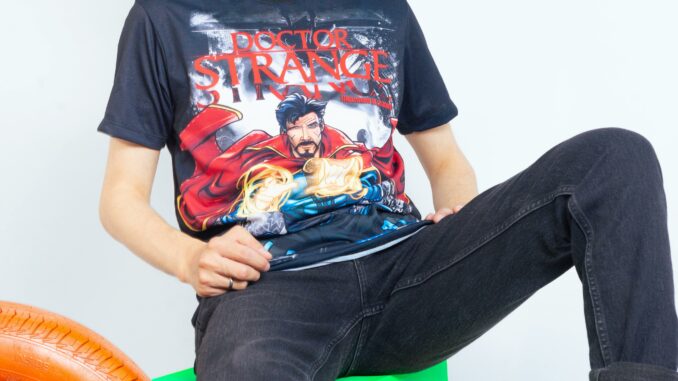
The trend of t shirt printing has surged in popularity lately, giving individuals and businesses the chance to personalize their wardrobe. Whether it’s custom designs or promotional gear, professional t shirt printing opens up a world of possibilities. However, achieving top-notch prints calls for a blend of flair and precise technical know-how. In this article, we delve into the artistry and science that underpins t shirt printing.
1. Exploring Printing Methods
T shirt printing relies on a variety of techniques, each with its distinct advantages. Here are some commonly used approaches:
a) Silk Screening: This method involves transferring ink onto fabric through a mesh screen. Ideal for bulk print orders with bold designs, silk screening delivers exceptional color accuracy and lasting quality.
b) Direct to Garment (DTG) Printing: DTG printing allows intricate designs to be directly printed onto fabric using specialized inkjet printers. This technique excels in capturing details and vibrant hues, making it perfect for print runs.
c) Heat Transfer Vinyl (HTV): HTV entails cutting out vinyl sheets with designs and heat pressing them onto fabric. Great for custom orders and personalized designs, Heat Transfer Vinyl (HTV) provides a range of color options and finishes.
2. Choosing the Right Fabric
Selecting the right fabric is a factor in t shirt printing that is often overlooked. Different types of fabrics react differently to printing techniques, affecting the look and feel of the product.
Cotton remains a popular choice due to its softness, breathability, and ability to absorb ink well. Polyester, on the other hand, offers durability and resistance to wrinkles. However, specialized inks that are suitable for synthetic fibers, such as sublimation or solvent-based options, are required.
For those interested in eco-friendly options or looking for fabrics suitable for activewear or athleisure, bamboo or organic cotton blends are good choices. By choosing the fabric based on your printing needs, you can ensure high-quality results that meet your customers’ expectations.
3. Mastering Color Selection and Management
Mastering color selection and management are essential in t shirt printing as colors play a role in conveying messages and attracting attention. Achieving desired color reproduction involves the selection and management of colors throughout the printing process. Customers often have color preferences or brand guidelines that need to be followed.
Using Pantone Matching System (PMS) colors can help maintain consistency across prints or color modes. It’s important to keep in mind that the type of fabric used can impact how colors appear in prints. Testing prints on fabric samples or seeking advice from printers can help pinpoint any adjustments before moving forward with mass production.
4. Getting Artwork Ready for Printing
Preparing artwork for printing on t shirts is a step toward achieving top-notch results. Using a high-resolution design ensures that the print comes out sharp and clear.
When sending artwork files to printers it’s best to opt for vector formats like Adobe Illustrator (AI) or Encapsulated PostScript (EPS) files since they maintain image quality regardless of size adjustments.
For raster images such as photos or intricate illustrations, a minimum image resolution of 300 dpi (dots per inch) guarantees vibrant prints. Additionally, using specific backgrounds and providing precise dimensions simplifies incorporating designs into various print layouts or garment sizes.
5. Including Care Instructions
A T shirt print should not only look good initially but also hold up well over multiple washes. To ensure longevity, consider including care instructions along with your garment’s branding tags or labels;
a) Specify temperature limits for washing to prevent fading or shrinking caused by conditions.
b) When it comes to drying, it’s best to either hang dry or use a tumble dryer, depending on the fabric type and your preference, for wrinkle results.
c) For ironing, make sure to follow the ironing instructions, including setting the heat and considering whether a cloth should be placed between the iron and the print.
d) By providing care guidelines, you enhance the experience for customers while preventing potential issues like color fading or prints peeling off.
Conclusion
The process of t shirt printing combines creativity with expertise to bring ideas to reality. Understanding printing methods, choosing materials, managing colors thoughtfully, preparing artwork accurately, and offering proper care advice are all essential aspects of producing top-notch prints that leave a lasting impression on customers. By improving your skills and collaborating with printers, you can ensure that every t shirt design transforms into a masterpiece.
Support Northern Colorado Journalism
Show your support for North Forty News by helping us produce more content. It's a kind and simple gesture that will help us continue to bring more content to you.
BONUS - Donors get a link in their receipt to sign up for our once-per-week instant text messaging alert. Get your e-copy of North Forty News the moment it is released!
Click to Donate
